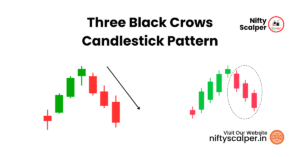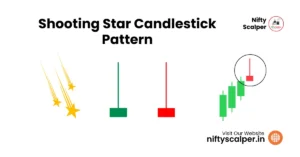Candlestick patterns are essential tools in technical analysis, offering valuable insights into market trends and potential reversals. One of the more reliable bullish reversal patterns is the Piercing Line. In this blog, we’ll explore the Piercing Line candlestick pattern in detail, covering its definition, identification, significance, types, trading strategies, advantages, disadvantages, and limitations. Let’s dive in.
Table of Content
What is a Piercing Line Pattern?
The Piercing Line is a two-candlestick pattern that signals a potential bullish reversal at the bottom of a downtrend. It consists of:
- First Candle: A large bearish candle, indicating a continuation of the downtrend.
- Second Candle: A bullish candle that opens below the low of the first candle but closes above its midpoint, indicating a shift in market sentiment from bearish to bullish.
How to Identify a Piercing Line Candle
To identify a Piercing Line pattern, look for the following characteristics:
- First Candle: A long bearish candle with a large body, indicating strong selling pressure.
- Second Candle: A bullish candle that opens below the low of the first candle and closes above the midpoint of the first candle’s body.
- Context: The pattern appears after a downtrend, signaling a potential bullish reversal.
Significance of the Piercing Line Pattern
- The Piercing Line pattern is significant because it indicates a strong shift in market sentiment. The appearance of the second bullish candle suggests that buyers have entered the market with enough force to counteract the selling pressure. This shift can lead to a bullish trend, making the Piercing Line pattern a reliable signal for traders looking to capitalize on upward movements.
How to Trade the Piercing Line Pattern
When trading the Piercing Line pattern, consider these strategies:
- Confirmation: Wait for the next candlestick to confirm the bullish reversal. A strong bullish candle following the Piercing Line pattern can validate the anticipated upward move.
- Volume Analysis: Higher trading volume on the second bullish candle adds weight to the pattern, increasing the likelihood of a sustained upward movement.
- Entry Point: Enter the trade near the close of the second bullish candle or at the open of the next candle.
- Risk Management: Use stop-loss orders below the low of the Piercing Line pattern to manage risk.
Advantages & Disadvantages
Advantages:
- Reliable Reversal Signal: Provides a strong indication of a potential bullish reversal.
- Clear Criteria: Has specific identification criteria, making it easier to spot on candlestick charts.
- Volume Confirmation: Can be confirmed with higher trading volumes, adding to its reliability.
Disadvantages:
- False Signals: May produce false signals in volatile or ranging markets.
- Context-Dependent: Its reliability depends on the preceding downtrend and market conditions.
Limitations and Risks :
While the Piercing Line pattern is a powerful indicator, it has limitations:
- Market Conditions: In highly volatile markets, the pattern may appear frequently, reducing its reliability.
- Need for Confirmation: Without confirmation, the pattern can lead to incorrect predictions.
- Over-Reliance: Relying solely on Piercing Line patterns without considering other indicators can result in poor trading decisions.
Conclusion:
The Piercing Line candlestick pattern is a valuable tool for traders, indicating potential bullish reversals after a downtrend. By understanding how to identify and interpret Piercing Line patterns, and considering their advantages and limitations, traders can enhance their technical analysis and make more informed trading decisions. Remember, while Piercing Line patterns are informative, they should be used in conjunction with other analysis tools to mitigate risks and improve accuracy.
By leveraging the insights provided by Piercing Line candlesticks, traders can better navigate the complexities of the financial markets and improve their trading outcomes.
Remember, successful trading is not just about mastering Piercing Line candlestick Pattern; it’s about combining them with Risk Management, Discipline, and Continuous Learning to get the best results in the stock market.




